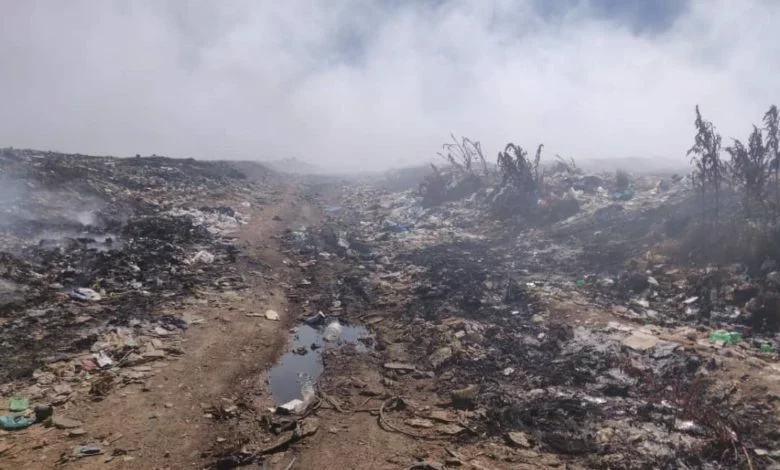Bulawayo’s Richmond Landfill, known as Ngozi Mine, has been at the centre of heated debate as persistent fires spew hazardous smoke, affecting nearby communities and raising health concerns.
In light of these risks, the Matabeleland Institute for Human Rights (MIHR) has proposed integrating waste pickers into Bulawayo’s waste management system as a partial solution, alongside urgent upgrades to landfill infrastructure.
The site, initially designed in 1994 with a projected lifespan of 20–25 years, now faces critical challenges due to inadequate maintenance, outdated equipment, and growing waste demands.
Fires at Ngozi Mine have become a frequent hazard, with over 109 incidents recorded between 2021 and 2024, primarily attributed to waste pickers who set fires to recover metal recyclables easily. Methane buildup from decomposing waste has also led to spontaneous combustion.
Residents of nearby Cowdray Park have long expressed concerns about the health risks posed by the smoke.
Proportional Representation Councillor Siboniso Moyo stated during a recent full council meeting that the landfill’s impact on residents of both Emakhandeni and Cowdray Park has reached an unbearable level.
“The smoke from Ngozi Mine is harassing us, it has gone on for a long time and it is now affecting Emakhandeni and Cowdray Park residents, I don’t know how long will we talk about it, or people have to die before the council acts,” she said.
With the rainy season approaching, the risk of fires worsening has heightened, adding urgency to find sustainable solutions.
In response, MIHR has championed a new approach: integrating waste pickers into Bulawayo’s official waste management system. MIHR Coordinator Khumbulani Maphosa argues that this approach could drastically reduce the volume of waste going to the landfill, which, in turn, could lower the likelihood of fires.
“We need a model that reduces waste at its source. Incorporating waste pickers would also foster a collaborative approach to waste management while minimising the health risks currently plaguing these communities,” Maphosa said.
Sithembisiwe Ndlovu, the Environmental Management Agency (EMA) Provincial Manager said the solution is to properly manage the current landfill to curb recurring fires.
Maphosa said the third solution is to develop a proper landfill site, as the current Ngozi Mine lacks essential infrastructure and safety measures.
“That is not a landfill site, it is a dump site because it has not been constructed according to the proper standards of a landfill. We need to look for resources to construct a proper landfill site,” he said.
In last month’s full council meeting, Cowdray Park councillors raised the possibility of relocating Ngozi Mine to a less populated area or inviting a private investor to extract gas from the landfill.
However, the estimated $2.8 million cost for relocation – according to a council report seen by CITE – along with the three-year timeline needed to establish a new landfill, makes this solution impractical in the near term.
Bulawayo’s Health Services Department director Dr Edwin Sibanda-Mzingwane, recommended prioritising immediate upgrades to the existing site, a more feasible solution given budget constraints.
He noted that with proper equipment—such as a landfill compactor, bulldozer, and tipper trucks—waste compaction, confinement, and covering could be performed daily to prevent fires. This approach would cost an estimated $1.7 million, significantly less than relocation.
“If we re-equip the site, we can drastically reduce the frequency of fires. Between 1994 and 2020, when the landfill had adequate machinery, fires were virtually nonexistent. Bulawayo’s landfill was once a model for the country, and restoring these practices could bring us closer to that standard again,” Dr. Sibanda-Mzingwane stated.
To tackle Bulawayo’s growing waste issue, council officials are also exploring waste-to-energy options.
A public-private partnership could create a waste-to-energy facility that converts up to 90% of landfill waste into renewable energy, extending the landfill’s lifespan by over 30 years. Such a solution would not only minimise waste volume but also produce energy that could benefit the city.
MIHR’s recommendation to integrate waste pickers aligns well with the Health Services Department’s focus on upgrading the existing site.
By engaging waste pickers, Bulawayo could harness their efforts to segregate and recycle waste at source, reducing landfill input. Meanwhile, an investment in infrastructure upgrades would improve waste compaction and management, directly addressing fire risks.
Implementing a waste picker integration model, paired with waste-to-energy solutions and critical equipment upgrades, would address immediate environmental health risks while laying the groundwork for sustainable, long-term waste management in Bulawayo.

